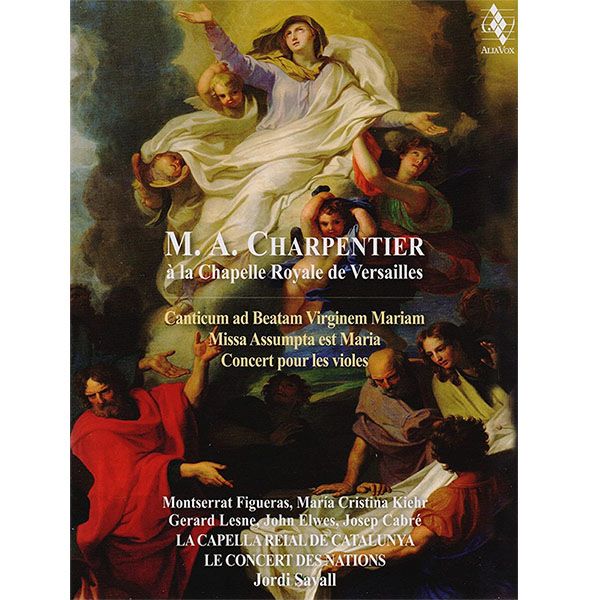M.A. CHARPENTIER
À la Chapelle Royale de Versailles
Hespèrion XXI, Jordi Savall, La Capella Reial de Catalunya
25,99€
Referència: AVDVD9905
- LA CAPELLA REIAL DE CATALUNYA
- LE CONCERT DES NATIONS
- JORDI SAVALL
It was 1988, and at that time the vast majority of Charpentier’s works were still accessible only via the original sources, so we had to rely on microfilms of the composer’s complete works collected in the twenty-eight manuscript volumes known as “Meslanges”. Poring over the manuscript pages on the screen of our microfilm reader, I studied and selected the works for the programme on the basis of the original texts. I was immediately amazed by the beauty, modernity, expression and richness of Charpentier’s music, and Montserrat and I turned our minds to putting together the best possible team of singers and musicians to start work on this new and fascinating repertory. It was in the last warm days of spring that we started to rehearse the programme of Charpentier’s Canticum ad Beatam Virginem Mariam at our country house in Begues, a small village 700 metres above sea level, overlooking the coastal town of Sitges in Catalonia.
First of all, I would like to begin by expressing my gratitude to the true instigators of this wonderful project – Philippe Beaussant and Vincent Bertier de Lioncourt, who in those ground-breaking years were responsible for bringing the “new Baroque music” to Versailles and organizing the first series of Journées devoted to the great composers of French music. In fact, it was their request for us to prepare a programme on the religious music of Marc-Antoine Charpentier to be performed at the Royal Chapel at Versailles that inspired us to undertake this project.
It was 1988, and at that time the vast majority of Charpentier’s works were still accessible only via the original sources, so we had to rely on microfilms of the composer’s complete works collected in the twenty-eight manuscript volumes known as “Meslanges”. Poring over the manuscript pages on the screen of our microfilm reader, I studied and selected the works for the programme on the basis of the original texts. I was immediately amazed by the beauty, modernity, expression and richness of Charpentier’s music, and Montserrat and I turned our minds to putting together the best possible team of singers and musicians to start work on this new and fascinating repertory. It was in the last warm days of spring that we started to rehearse the programme of Charpentier’s Canticum ad Beatam Virginem Mariam at our country house in Begues, a small village 700 metres above sea level, overlooking the coastal town of Sitges in Catalonia.
+ information in the CD booklet
JORDI SAVALL
Seoul, 29th April, 2014
Translated by Jacqueline Minett







Share